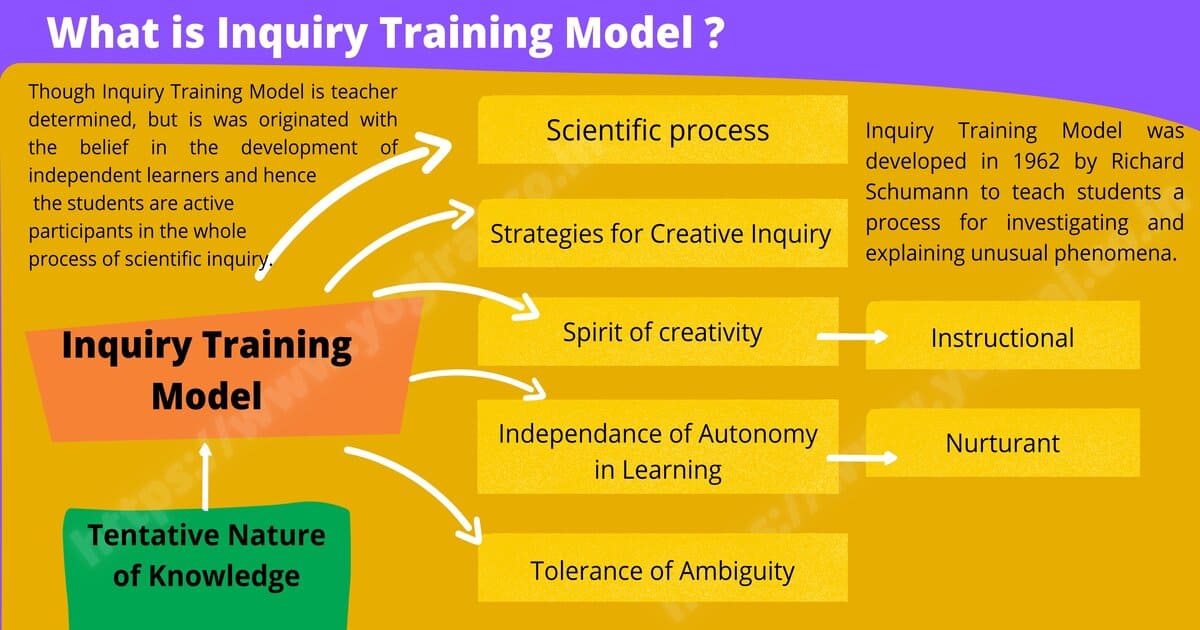Inquiry Training Model
by Yuvi - March 7, 2022
What is Inquiry Training Model ?
Though Inquiry Training Model is teacher determined, but is was originated with the belief in the development of independent learners and hence the students are active participants in the whole process of scientific inquiry. Children are curious and eager to grow, and inquiry training capitalizes on their natural energetic explorations, giving them specific directions so that they explore new areas more forcefully.
Who developed the inquiry training model ?
Inquiry Training Model was developed in 1962 by Richard Schumann to teach students a process for investigating and explaining unusual phenomena.
The general goal of inquiry training is to help students develop the intellectual discipline and skills necessary to raise questions and search out answers stemming from the curiosity
Assumptions of Inquiry Training Model
- All knowledge is tentative
- There is no one particular answer to a problem
- Inquiry is natural.
- The Inquiry process is a co-operative efforts. It always facilitated by the ‘give and take’ of ideas
Objectives of Inquiry Training Model
- To develop the scientific process skills
- To develop strategies of creative inquiry among students.
- To develop ability to tolerate ambiguity
- To develop spirit of creativity among students
Goals of inquiry training model
- To enhance the thinking ability of the student.
- To enable them to form conclusions based on facts.
- To enable them to have fluency in their thinking and speaking.
- More specialty to impart training of inquiry skills.
Steps involved in Inquiry Training Model
Step I: The teacher presents a discrepant event, which motivates the students to find out the answer e.g., if a brush is put into from below and if you give strokes from above, instead of failing down, the brush climbs up with every stroke. Observing this event, the students are surprised and a question comes to their mind, “How can this happen?” or “Why does the brush behave in this manner?”.
In order to find out the answers for this question then the teacher explains the procedure of inquiry
Step II: Now the students have to ask questions to the teacher, which can be answered only in the form of “Yes” or “No” e.g. the student can ask a question like “Is the inside wall of the cylinder rough?” which can be answered as “No”. But the question “How does the brush move?” will not be answered by the teacher.
The students ask question based on their hunches and assumptions and also modify their questions on the basis of information they get from the teacher while answering other’s questions.
This continues till the students find out the answer. Though the role of a teacher is very important in this process, it is the students who are fully involved in finding out the solution.
This activity gives the students and experience in collecting information (through asking questions, listening to others, by experimenting) as well as generating and testing hypotheses.











